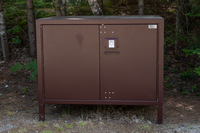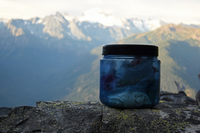
NPS/Grace Kirk General Bear SafetyBlack bears can be found at Katahdin Woods and Waters National Monument. Some trail conditions make it hard for bears to hear, see, or smell approaching hikers. Be particularly careful near streams, when it's windy, in dense vegetation, or in any circumstance that limits line of sight (e.g. a blind corner or rise in the trail).

NPS/Gin Majka Camping and Food Storage

NPS Why is Human Food Bad for Bears?By eating human food, bears can lose their preference for natural food sources and their fear of humans. Over time, these bears may begin approaching people in search of food. They can become aggressive, unpredictable, and dangerous. Bears looking for human food and garbage can damage property and injure people. These bears pose a risk to public safety and are often euthanized as a result. Studies have also shown that bears that lose their fear of people have a shorter life expectancy than bears that feed on natural foods and are afraid of people. As bears become comfortable around humans, they are more likely to be in areas where humans are. These bears are at risk of being euthanized to protect people, getting hit by a car, and becoming an easy target for poachers. |
Last updated: September 25, 2023
